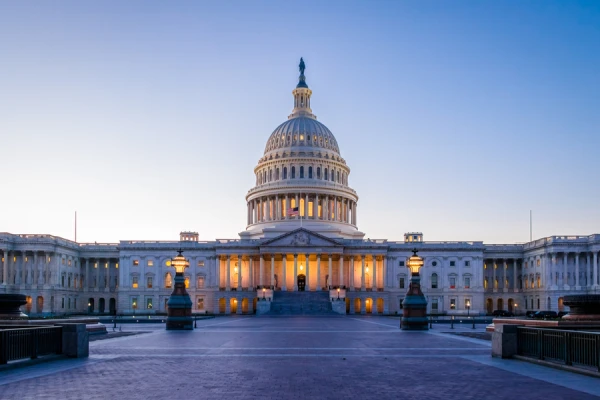
Washington, D.C. Newsroom, Aug 30, 2022 / 11:00 am (CNA).
U.S. House Speaker Nancy Pelosi called restricting abortion “sinful” on Women’s Equality Day, in contradiction to her Catholic faith.
“The fact that this is such an assault on women of color and women — lower income families is just sinful. It’s sinful,” the Democrat from California said during a “reproductive health” panel on Aug. 26. “It’s wrong that they would be able to say to women what they think women should be doing with their lives and their bodies. But it’s sinful, the injustice of it all.”
Pelosi made her comments while visiting the University of California San Francisco Mission Bay campus for a “reproductive health roundtable discussion.” Her remarks immediately followed a speech from another Democrat from California, who also identifies as Catholic.
“The fact that we have a government now on a federal level that is mandating pregnancy — government-mandated pregnancy — flies in the face of every personal freedom on which our country is founded,” Rep. Jackie Speier said during the event.
The congresswoman, who mentioned her own previous abortion, said she supported expanding access to abortion pills and extending the FDA’s current 10-week limit for use of those pills.
The panel largely responded to the Supreme Court’s decision in June to overturn Roe v. Wade, which legalized abortion nationwide, and allow states to regulate abortion as they see fit.
“Emboldened by the radical Supreme Court, extreme MAGA [Make America Great Again] Republicans are inflicting unimaginable pain on women and their families,” Pelosi warned at the beginning of the panel. “Indeed, today, American women are not as free as their mothers and their grandmothers were.”
Over the years, Pelosi has defended abortion multiple times while also citing her Catholic faith. Archbishop Salvatore J. Cordileone announced in May that Pelosi may no longer receive Holy Communion in the Archdiocese of San Francisco. Several other archbishops and bishops followed his lead.
The Catholic Church considers abortion — the destruction of a human person — a grave evil.
“Human life must be respected and protected absolutely from the moment of conception,” the Catechism of the Catholic Church reads. “From the first moment of his existence, a human being must be recognized as having the rights of a person – among which is the inviolable right of every innocent being to life.”
The Church considers abortion a “crime against human life” and obtaining an abortion — or helping someone else obtain an abortion — are grounds for automatic excommunication.
“Direct abortion, that is to say, abortion willed either as an end or a means, is gravely contrary to the moral law,” the catechism says.
At the same time, the Catholic Church offers forgiveness and mercy for those involved with abortion.
“The Church does not thereby intend to restrict the scope of mercy,” the catechism reads, but instead “makes clear the gravity of the crime committed, the irreparable harm done to the innocent who is put to death, as well as to the parents and the whole of society.”
If you value the news and views Catholic World Report provides, please consider donating to support our efforts. Your contribution will help us continue to make CWR available to all readers worldwide for free, without a subscription. Thank you for your generosity!
Click here for more information on donating to CWR. Click here to sign up for our newsletter.






Howler!
The Pelosi Protest in a country which, until the Dobbs ruling, was the least restrictive fetal killing field in the world, except for Communist China and North Korea.
Actually that title goes to Canada. There’s no regulation whatsoever.
Saith the archbishop-ress of partial birth abortion…
I guess all the stern warnings she received about endangering her soul she must have gotten from Francis last October failed to change her mind.
Pray for all unrepentant sinners that their hardness of heart will be softened.
Amen, Deacon Edward.
These sad, pathetic women need our prayers.
And yet, we’re subjected to her photographed with Pope Francis, all with big smiles.
She is a false prophet.
Everything I read about this pathetic woman is – pathetic.
And then I read about the actor Shia Laboeuf who portrays St. Padre Pio in the upcoming (Sept 9) film of his life, and it gives me hope – much hope.
We’ll get through this.
On may suspect that she has willfully lost her eyes to see or her ears to hear as it appears that God may be turning his Face from her, maybe withdrawn the Holy Spirit.
Whenever I see a photo of Nancy Pelosi I am driven to draw it nearer to me , to see if I can spot the horns under har bouffant hairdo.
Nobody, including the federal government, “mandates pregnancy.” There is a foolproof method of contraception called abstinence. Don’t use sexual intercourse as recreation when it was meant for procreation. Yes, there are rare instances when pregnancy results from rape, but those cases are far from the majority of abortions. The Leftist Democrats have been working to eliminate personal responsibility since 1933 to the detriment of individuals and society. Everyone needs to take responsibility for their actions and the consequences thereof, period.
This so called catholic needs to be ousted….. such a shame to have women that are “catholic” promote taking the life of a child that our loving God has made possible. Makes me just sick that they don’t even care about the babies that are to born. Not good women or mother’s.
How is it that every Catholic bishop has not rushed to support Archbishop Cordileone’s effort to end the desecration of the Blessed Sacrament by refusing to administer our Lord to this high priestess of satan?
Her evil contagion is vomiting forth whenever she speaks now and erupting across the face of the earth, while our shepherds — with too few exceptions — do virtually nothing to protect their flocks.
The antichrist with is is now all to clear — and it is leftism.
In the meantime, half of America’s Catholics vote for its insane, vile, monstrous agenda every chance they get.
“Woe to those who call evil good and good evil, who put darkness for light and light for darkness, who put bitter for sweet and sweet for bitter.” Isaiah 5:20
Its interesting but not shocking that Democrats like Pelosi NEVER speak about the virtual of personal responsibility. NOBODY is responsible for your getting pregnant but YOU. And that applies not matter what color you are or what income level you possess. It seems rather “sinful” to me that Pelosi implies that women lack the brains to make responsible decisions, like abstaining from sexual activity when needed. They therefore MUST need the ability to the murder the child they conceive. Its hard to say what if anything this crone knows about sinfulness, inasmuch as she is a major proponent of late term abortion. Which she appears to believe a greater good for woman-kind. Some can posit the “clump of cells” argument in arguing for abortion in the first two months of a pregnancy. But that is absolutely bogus by well before the 9th month. Yet there is no recognition of this reality from the democrats. I have a friend in her 60’s (past pregnancy age herself) who recently made it clear to me that this will be her voting issue. She has no daughters, and thus I am mystified why she takes this issue like she will need an abortion herself tomorrow. Out the window evidently in her voting decision are REAL life concerns about the open border admitting terrorists and fentanyl pushers and sex traffickers, food shortages, hyper inflation, and the dangers presented by the increasingly war-like posture of our enemies. No comment about the violence perpetrated on life centers and churches by pro-abortion “activists”. Its clear that clergy must speak up loud, often and clear with brutal frankness not only about this barbaric procedure, but about the sinfulness of those who support it, medically or politically. I would consider Pelosi merely dim-witted if she wasnt doing so much harm.
Men often put extreme pressure on a wife or girlfriend to terminate or else
Which again feels like an argument that women lack either intellect or the spine to understand the consequence of what they do. I personally would take the “or else” rather than continue a relationship with a man who urged me to kill my baby.
More “theology” from Professor Pelosi! No doubt she will be warmly
welcomed the next time she goes to the Vatican. And Cardinal Gregory
will be silent and keep giving her Communion.
I am so tired of well-heeled women pleading compassion for minority and low income women to justify their promotion of abortion. How does it show respect/compassion for minority and low income women to tell them their babies are trash?
Our Lord persevered in efforts to help free Judas from the curse incurred by him that blinded him to Lord’s warnings . The Holy Father too likely with the intention to set such persons free – ? from the blinding effects of the curses incurred .
https://biblehub.com/deuteronomy/27-25.htm
Such persons also ignoring the wisdom and warnings from exorcists as well .
The Govt. too , participating , even in the act of bribing by supporting such choices … and we see the effects – as massive social issues , debt issues , afflictions of nature ,lives and families – wars , identity confusions , addictions , suicides ..
Persons who ought to see the connections refusing to connect the dots – themselves being blinded by the curses ..
Used to be puzzled about the focus given by Rev.Fr.Jim Blount , for the Precious Blood prayers ( a rather long standing devotion ) as advocated for our times – not hard to see how much we need same –
https://www.youtube.com/watch?v=OOghQCAeqrE
Blessings !